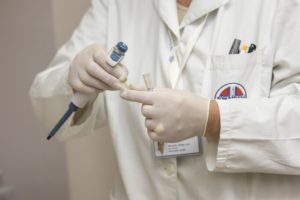If you’re undergoing an anoscopy soon and unsure of what to expect, don’t fret—this simple procedure is pretty straightforward and extremely effective in helping your doctor diagnosis whatever anal/colorectal condition you may have.
What is an anoscopy?
An anoscopy is a quick and painless examination used to identify and diagnose any problems in the gastrointestinal tract, specifically inside the anus and rectum. The procedure helps your doctor identify various potential anorectal conditions, including hemorrhoids, anal fissures, anal polyps, anal abscesses and, more rarely, anal cancer. An anoscopy is often performed in conjunction with other diagnostic tests such as a digital rectal exam (DRE) or a biopsy.
How is an anoscopy performed?
You’ll first be asked to remove your clothing and undergarments and lie down either sideways or bending forward on the exam table.
 Your doctor will then insert a light-equipped device called an anoscope into your lower gastrointestinal tract via the anus. An anoscope is a small, hollow, rigid tube roughly 3-5 inches long and 2 inches wide and is usually coated with a jelly-like substance to help ease insertion. While the device is being inserted, your doctor may also ask you to clamp and relax your internal muscles to help with the placement of the anoscope.
Your doctor will then insert a light-equipped device called an anoscope into your lower gastrointestinal tract via the anus. An anoscope is a small, hollow, rigid tube roughly 3-5 inches long and 2 inches wide and is usually coated with a jelly-like substance to help ease insertion. While the device is being inserted, your doctor may also ask you to clamp and relax your internal muscles to help with the placement of the anoscope.
During the procedure, you may feel pressure or an urge to have a bowel movement. If you have hemorrhoids, there may be a small amount of bleeding.
Once the exam is completed, your doctor will gently withdraw the anoscope.
How do you prepare for an anoscopy?
There isn’t any special preparation required for an anoscopy. However, you’ll be advised to empty your bladder and bowels prior to the procedure to make the exam more comfortable. To help with this, your doctor may give you a laxative or enema.
Most patients are able to drive themselves home following the procedure, so you won’t need to arrange for someone to pick you up unless you wish to.
Once your doctor confirms the results of your anoscopy, you can move forward with determining the best treatment plan for your condition. Click here to learn more about the anorectal anatomy and potential anorectal conditions.




